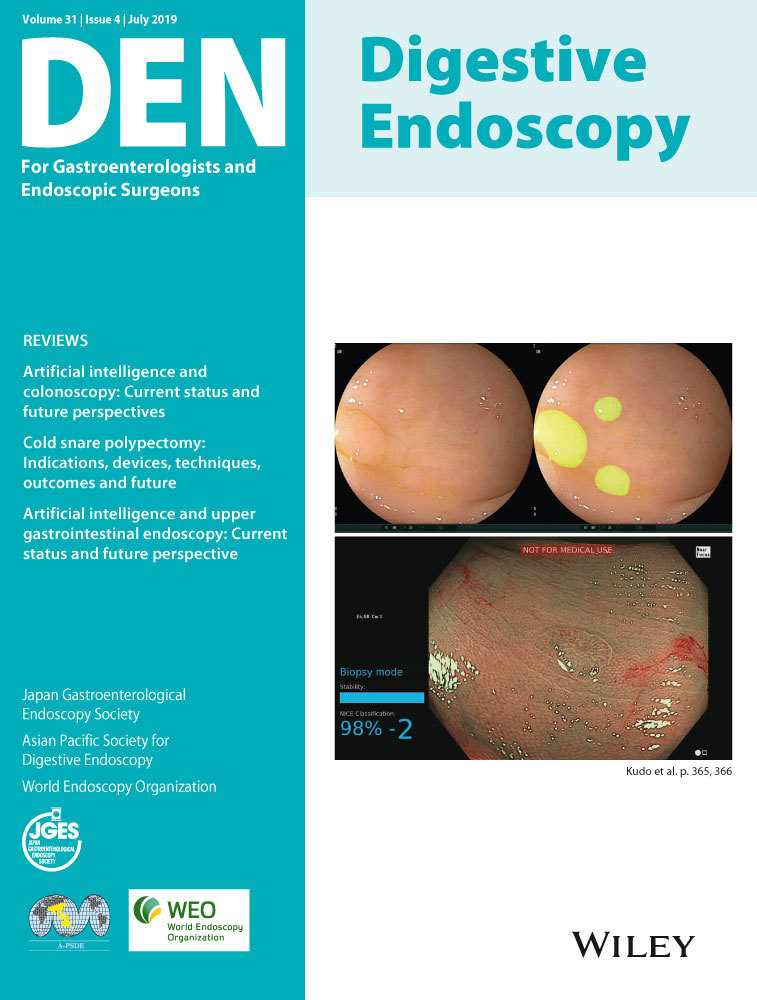Clinical experience of using a novel self-help inflatable balloon to prevent esophageal stricture after circumferential endoscopic submucosal dissection
Abstract
Although endoscopic submucosal dissection (ESD) is gradually becoming a first-line treatment for superficial esophageal neoplasms (SEN), strictures occur in almost 100% of cases after circumferential ESD. A standard method to prevent stricture has not been established. Thus, we propose a novel self-help inflatable balloon to prevent stricture. The new balloon was used by the patients themselves at home (4–5 times a day, duration of each procedure was approximately 15–20 min), and was removed when the defects were almost healed. From January 2018 to September 2018, eight patients who received circumferential ESD for SEN and underwent a novel self-help inflatable balloon to prevent stricture were enrolled. Median size of the mucosal defects was 76.3 mm (range: 50–90 mm). Median time for removing the self-help inflatable balloon was 94.6 days (range, 71–119 days). Only one (12.5%) patient experienced stricture, and three endoscopic balloon dilation sessions were carried out for this patient. All patients tolerated the balloon well, and none experienced perforation or delayed bleeding. The self-help inflatable balloon seems to show a high preventive effect against stricture in patients whose mucosal defect was no longer than 100 mm in length after esophageal circumferential ESD. This method is economic, feasible, and safe.
Conflicts of Interest
The study was supported by grants or donations from China Postdoctoral Science Foundation (grant no. 2015M582809) and Beijing Municipal Science & Technology Commission (grant no. Z181100001718177). Author N.C. has a patent for the novel self-help inflatable balloon. Other authors have no conflicts of interest to disclose.




